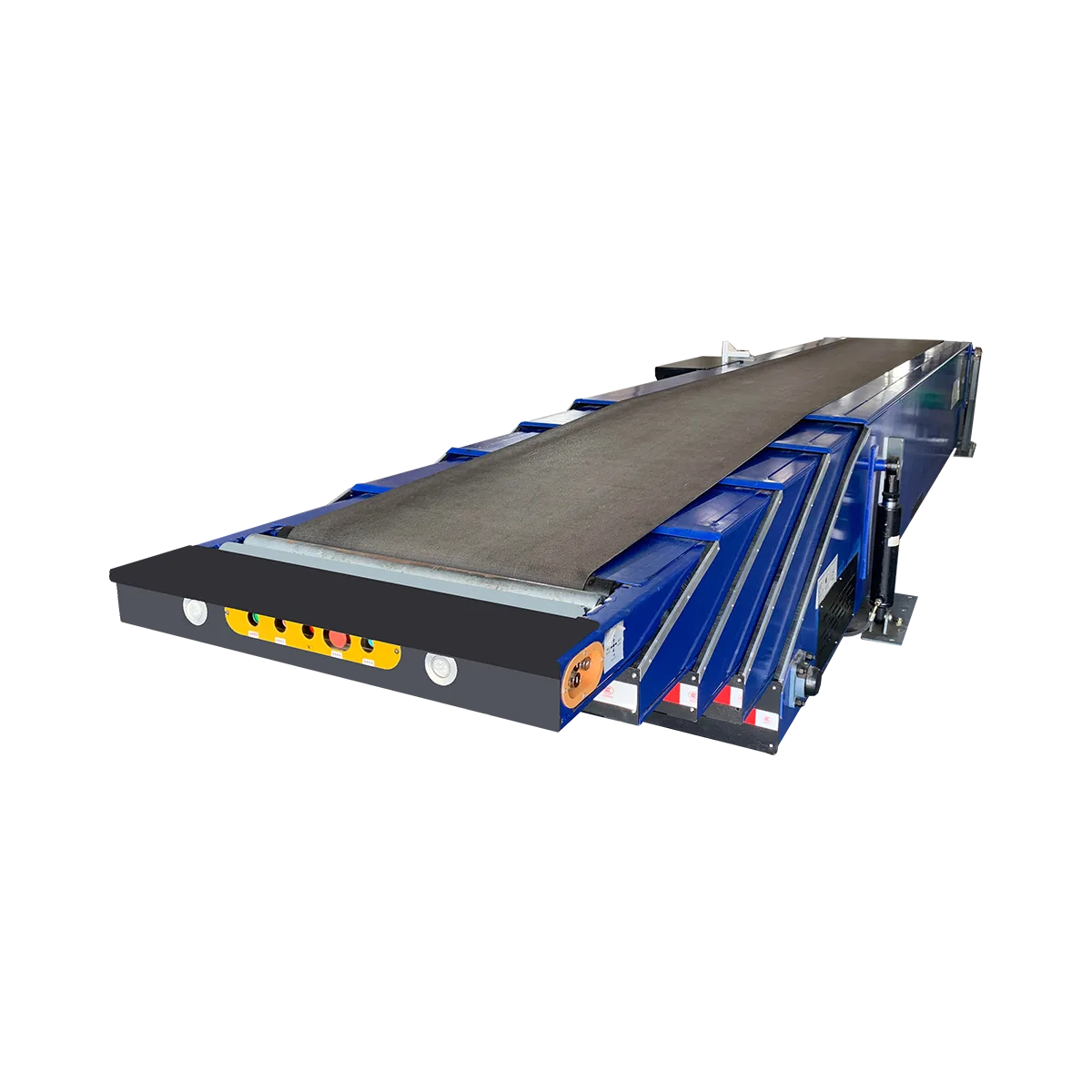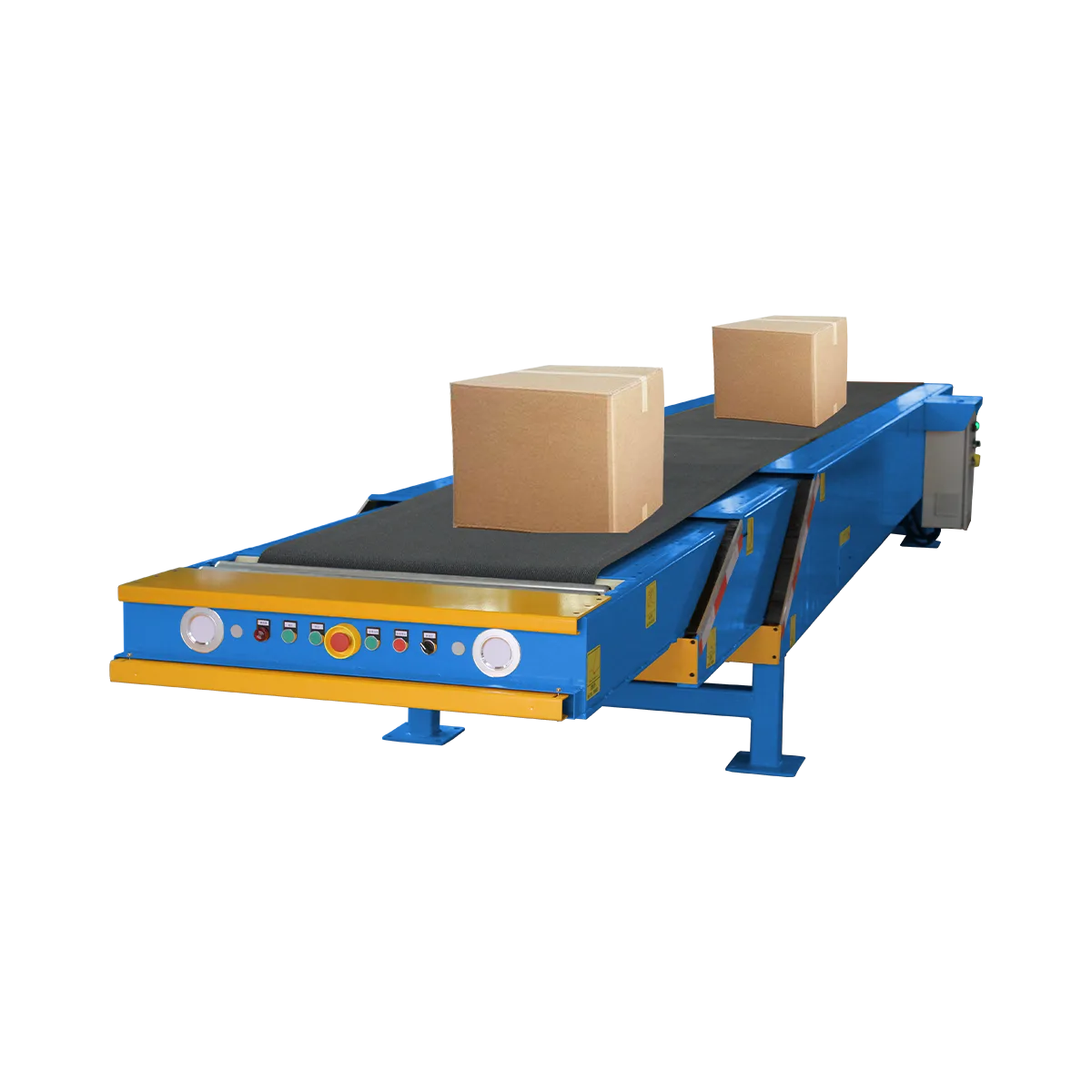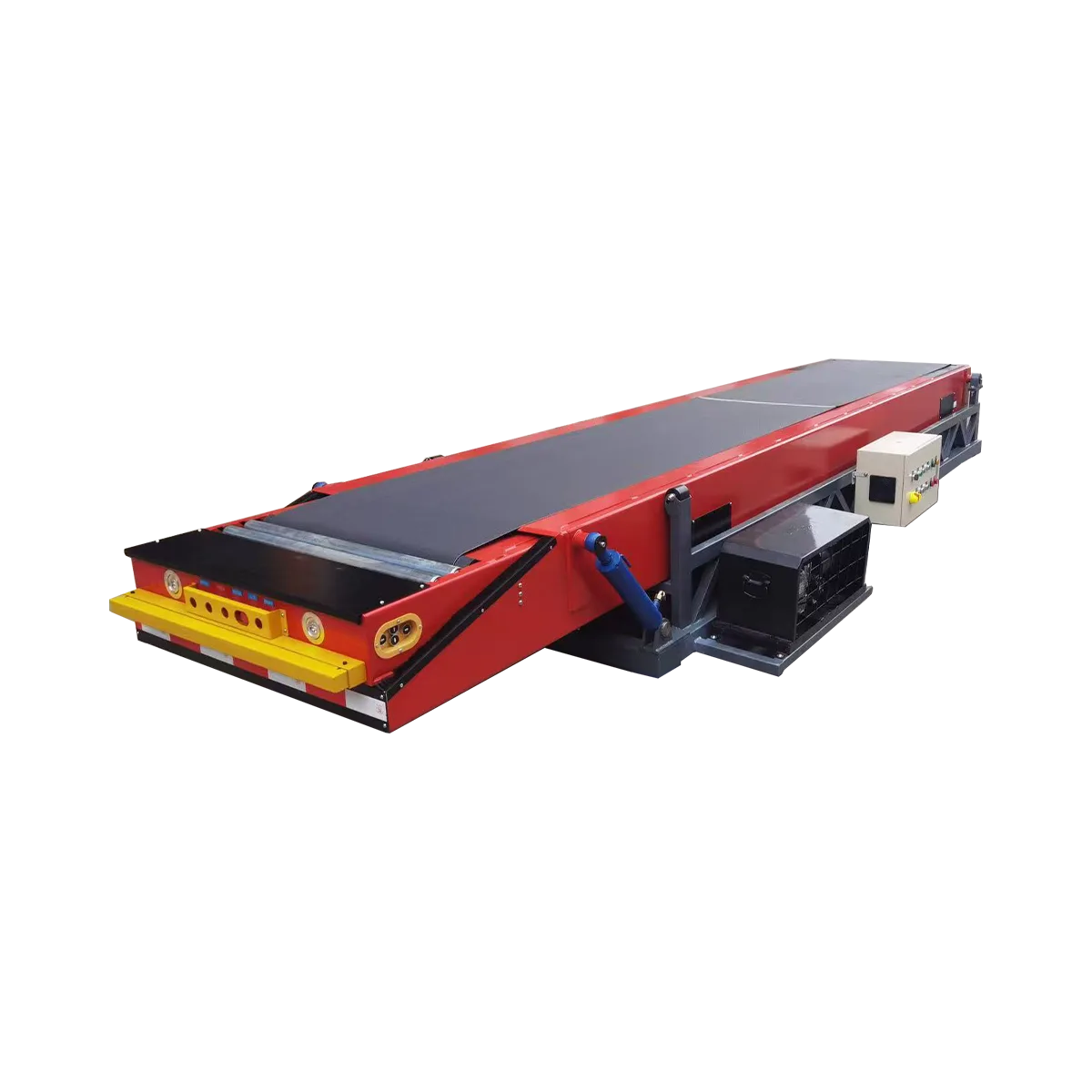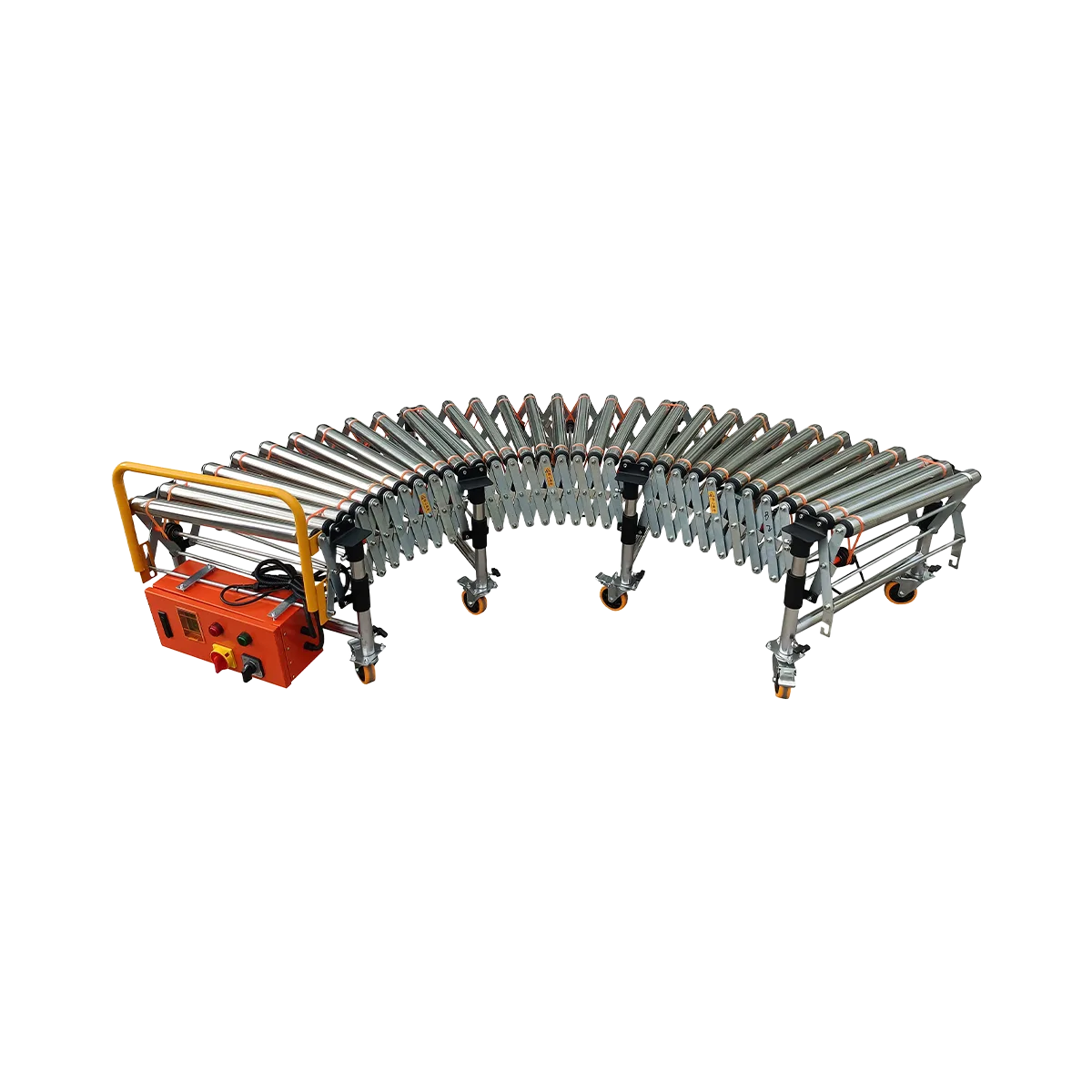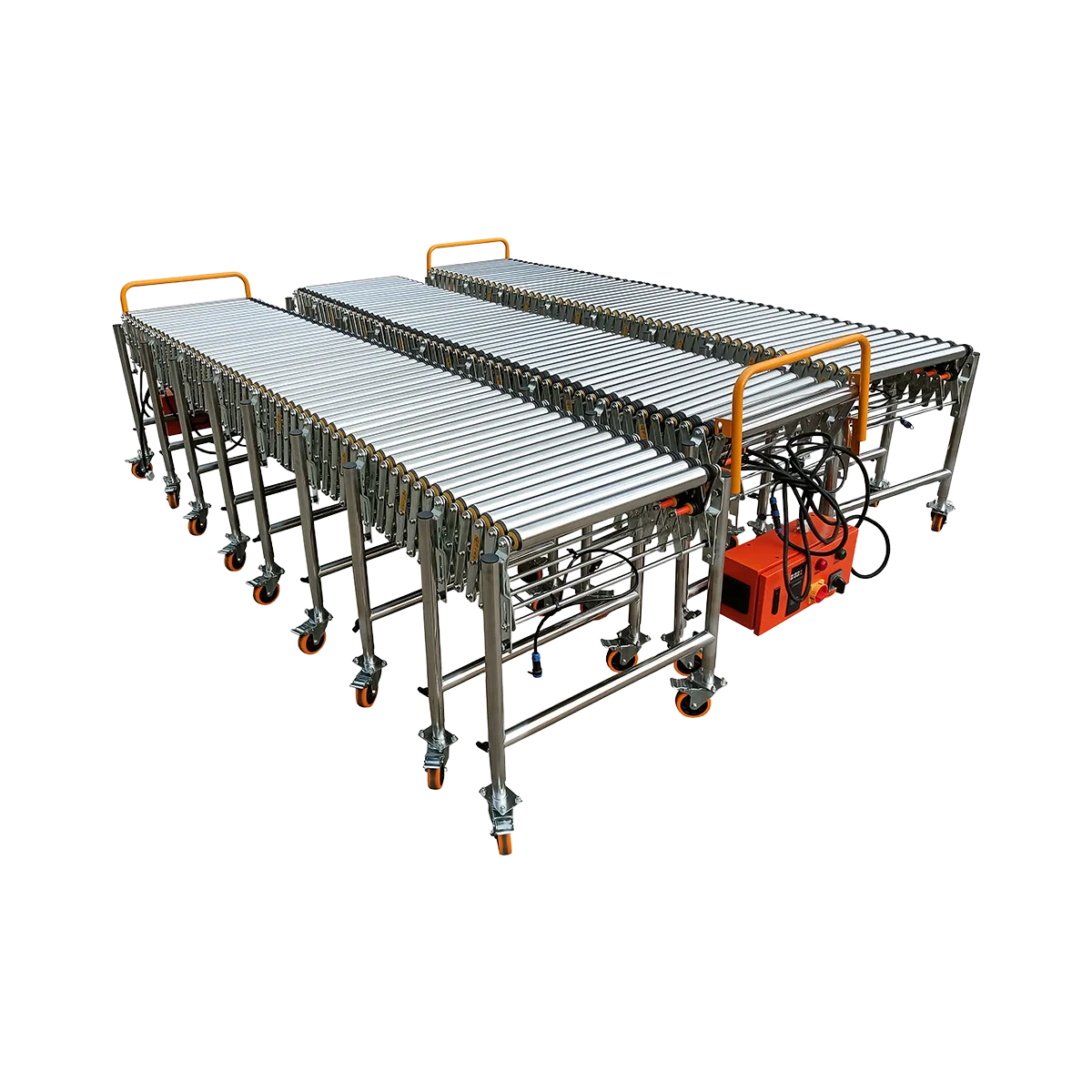The Ideal Warehouse Conveyor for Handling Heavy Book Cartons
Discover the optimal book distribution conveyor system for efficiently unloading publisher shipments. Our telescopic conveyor for books handles high-density cartons with ease.
Related Products
-
TeleScopic Conveyor – 5 SectionsCollapsed LengthExtended LengthLoad Capacity
60 kg/m
Applicable GoodsFlat-bottomed Goods
Bagged Goods
-
TeleScopic Conveyor – 4 SectionsCollapsed LengthExtended LengthLoad Capacity
60 kg/m
Applicable GoodsFlat-bottomed Goods
Bagged Goods
-
TeleScopic Conveyor – 3 SectionsCollapsed LengthExtended LengthLoad Capacity
60 kg/m
Applicable GoodsFlat-bottomed Goods
Bagged Goods
-
TeleScopic Conveyor – 2 SectionsCollapsed LengthExtended LengthLoad Capacity
60 kg/m
Applicable GoodsFlat-bottomed Goods
Bagged Goods
-
Powered Roller Conveyor – O-shaped Belt Driven – 1500 mm/SectionCollapsed Length
525 mm
Extended Length1500 mm
Load Capacity80 kg/m
Applicable GoodsFlat-bottomed Goods
-
Powered Roller Conveyor – Multi-wedge Belt Driven – 2000 mm/SectionCollapsed Length
700 mm
Extended Length2000 mm
Load Capacity100 kg/m
Applicable GoodsFlat-bottomed Goods
-
Powered Roller Conveyor – Multi-wedge Belt Driven – 3000 mm/SectionCollapsed Length
1050 mm
Extended Length3000 mm
Load Capacity80 kg/m
Applicable GoodsFlat-bottomed Goods
In the world of logistics and distribution, few materials present the unique challenges that book cartons do. Dense, heavy, and often uniform in size, these cartons require specialized handling solutions to maintain efficiency and worker safety. A properly designed book distribution conveyor can transform what would otherwise be a labor-intensive, time-consuming process into a streamlined operation. This article explores the optimal conveyor solution for handling heavy book cartons in warehouse and distribution center environments.
The Unique Challenge of Book Logistics
Book cartons present distinct handling challenges that set them apart from other warehouse goods:
- Exceptional Density: Books are among the densest commonly shipped products, with cartons often weighing 20-30kg despite modest dimensions
- Uniform Size: Publisher shipments typically arrive in standardized carton sizes, allowing for optimized handling systems
- High Volume: Book distributors and publishers often process hundreds or thousands of cartons per day
- Fragility Concerns: Despite their weight, books can be damaged by rough handling, requiring gentle yet robust conveying solutions
- Seasonal Peaks: Publishing industry often experiences dramatic seasonal volume fluctuations
- Ergonomic Risks: Manual handling of heavy book cartons poses significant injury risks to workers
The physical strain of manually unloading book cartons from shipping containers or trucks is particularly problematic. A worker unloading a container of books might handle 20-30 tons of material in a single shift—an unsustainable workload that leads to fatigue, reduced productivity, and potential injuries.
Why Traditional Conveyors Fall Short
Standard warehouse conveying equipment often struggles with the unique demands of handling publisher shipments:
- Roller Conveyors: May lack the power to move heavy book cartons efficiently, especially on inclines
- Belt Conveyors: Often have insufficient capacity for the concentrated weight of book cartons
- Manual Systems: Create ergonomic hazards and bottlenecks in the unloading process
- Fixed Conveyors: Cannot reach deep into containers where manual carrying would still be required
- Gravity Systems: Lack the control needed for heavy, high-value products like books
These limitations highlight the need for a specialized solution designed specifically for high-density product handling in book distribution operations.
The High-Volume Solution: Telescopic Conveyor
For serious book distribution operations, the telescopic conveyor represents the industry-standard solution for efficient container unloading and loading. This specialized system offers several key advantages that make it particularly well-suited for handling heavy book cartons:
Deep Reach Capability
The telescopic conveyor’s defining feature is its ability to extend deep into shipping containers or trucks:
- Extendable Design: Available in configurations that can reach up to 17 meters into containers
- Multiple Sections: Models with 3-5 sections provide optimal balance between reach and stability
- Retractable When Not In Use: Conserves warehouse space during non-unloading periods
- Continuous Belt Surface: Eliminates transfer points that could damage book cartons
- Adjustable Height: Accommodates various truck and container heights
This deep reach capability eliminates the need for workers to manually carry heavy book cartons from the depths of the container to the warehouse, dramatically reducing physical strain and improving efficiency.
Robust Capacity for Heavy Loads
Book cartons demand conveying equipment with exceptional load-bearing capacity:
- High Load Rating: Supports up to 60 kg/m², easily handling the concentrated weight of book cartons
- Powerful Drive System: Equipped with 2.2 kW conveying motor to move heavy loads consistently
- Stable Platform: Rigid construction prevents sagging even under maximum load
- Durable Belt Material: 3mm PVK impact-resistant composite belt withstands the abrasion of cardboard cartons
- Industrial-Grade Components: Heavy-duty bearings and rollers designed for continuous operation
These robust specifications ensure the conveyor can handle the sustained workload of book distribution operations without failure or excessive maintenance requirements.
Speed and Control Features
Efficient handling of book cartons requires both speed and precise control:
- Adjustable Speed: Variable frequency drive allows speed adjustment from 10-40 m/min
- Bidirectional Operation: Supports both loading and unloading operations
- Emergency Stop Function: Ensures operator safety during high-volume operations
- Optional Counting System: Tracks carton volume for inventory management
- LED Illumination: Improves visibility inside dark containers
The ability to fine-tune conveyor speed is particularly valuable when handling books, as it allows operators to match the pace of the conveyor to the weight of the cartons and the capabilities of the palletizing team.
The Optimal Workflow for Book Distribution
Implementing a telescopic conveyor for books creates a highly efficient workflow for unloading publisher shipments:
Container Unloading Process
- Positioning: The telescopic conveyor is positioned at the container door and extended inside
- Front-End Loading: One or two workers at the front of the conveyor continuously feed it cartons from inside the container
- Continuous Flow: The powered belt transports cartons out of the container at a consistent rate
- Receiving End: Workers at the warehouse end remove cartons for palletizing or further processing
- Progressive Unloading: As the container empties, the conveyor can be extended further inside
This workflow dramatically reduces the physical distance workers must carry heavy loads, focusing their effort on the simple task of transferring cartons from shelves or stacks onto the conveyor belt.
Key Efficiency Improvements
Compared to manual methods or standard conveying equipment, the telescopic conveyor delivers significant operational benefits:
- Reduced Dock Time: Containers can be unloaded in 1-2 hours versus 3-4 hours with manual methods
- Labor Optimization: Requires only 2-4 workers versus 5-8 for manual unloading
- Injury Prevention: Minimizes lifting and carrying of heavy loads
- Consistent Flow: Maintains steady throughput of 2000-2500 cartons per hour
- Space Efficiency: Retracts when not in use to free up valuable dock space
For book distributors handling multiple container loads daily, these efficiency gains translate directly to significant cost savings and throughput improvements.
Implementation Considerations
When selecting a telescopic conveyor for logistics for printed media, several factors should be considered:
Space and Infrastructure Requirements
- Dock Configuration: Ensure sufficient clearance around container doors
- Floor Strength: Verify floor can support equipment weight (2-3.5 tons depending on model)
- Power Supply: Requires stable three-phase power supply
- Ceiling Height: Check for adequate vertical clearance, especially if using optional operator platform
Selecting the Right Model
- Container Types: Match conveyor length to the containers you typically handle
- Volume Requirements: Consider throughput needs when selecting conveyor width and speed capabilities
- Carton Dimensions: Standard 600mm width accommodates most book cartons, but 800mm available for larger formats
- Optional Features: Consider adding counting systems, LED lighting, or operator platforms based on specific needs
Integration with Existing Systems
The telescopic conveyor can be integrated with other warehouse systems to create a complete material handling solution:
- Connection to Powered Roller Conveyors: Can feed into existing conveyor networks for further distribution
- Warehouse Management System Integration: Optional counting features can provide data to inventory systems
- Palletizing Stations: Create efficient transfer points for building stable pallets
- Staging Areas: Design appropriate space for processed cartons awaiting further handling
Return on Investment Analysis
For book distributors and publishers, the investment in a telescopic conveyor system typically delivers rapid returns:
- Labor Cost Reduction: 50-60% decrease in labor hours per container
- Throughput Increase: 30-40% improvement in containers processed per shift
- Injury Prevention: Significant reduction in worker compensation claims and lost time
- Equipment Longevity: 8-10 year expected service life with proper maintenance
- Space Utilization: More efficient use of dock space and resources
Most operations handling over 1000 packages daily achieve full return on investment within 6-12 months through these combined savings and efficiency improvements.
Conclusion: The Professional Choice for Book Logistics
For serious, high-volume book logistics operations, the telescopic conveyor represents the industry-standard solution. Its combination of deep reach capability, robust load capacity, and efficient operation makes it uniquely suited to the challenges of handling heavy book cartons. By implementing this specialized system, book distributors and publishers can dramatically reduce unloading time, minimize manual handling, and create a safer, more efficient operation.
While the initial investment may exceed that of simpler conveying solutions, the rapid return on investment and long-term operational benefits make the telescopic conveyor the clear choice for professional book distribution operations focused on efficiency, worker safety, and throughput optimization.
Frequently Asked Questions
What makes book cartons particularly challenging to handle compared to other products?
Book cartons combine exceptional density with relatively small dimensions, creating concentrated weight that strains both workers and equipment. A standard book carton can weigh 20-30kg while being small enough for one person to lift, making it one of the densest commonly handled items in warehouse operations.
How many workers are needed to operate a telescopic conveyor system for unloading books?
A typical setup requires 2-4 workers: 1-2 at the container end placing cartons on the conveyor, and 1-2 at the receiving end removing and palletizing them. This represents a 50-60% reduction compared to traditional manual unloading methods.
What is the throughput capacity of a telescopic conveyor when handling book cartons?
When properly staffed and operated, a telescopic conveyor system can process 2000-2500 large cartons (15-30kg) per hour, making it suitable for high-volume publishing and distribution operations.
Can the telescopic conveyor be used for both loading and unloading operations?
Yes, the bidirectional capability allows the system to be used for both loading and unloading operations. The conveyor direction can be reversed using simple controls, providing versatility for facilities that handle both inbound and outbound shipments.
What maintenance is required for a telescopic conveyor in a book distribution environment?
Regular maintenance includes belt tension checks (monthly), bearing lubrication (quarterly), motor and drive system inspection (quarterly), and general cleaning to remove paper dust and debris. With proper maintenance, these systems typically operate reliably for 8-10 years before requiring major component replacement.
Table of Contents
Recent Posts
Optimize hardware store logistics with the right building supply conveyor systems. Our guide to tool distribution systems enhances retail warehouse automation for efficient operations.
Optimize your medical supply logistics with efficient gravity conveyor systems. Learn how to safely handle healthcare products while improving your hospital supply chain operations.
Discover how a sports equipment conveyor system can streamline your athletic gear logistics. Flexible conveyor solutions for all shapes and sizes of sporting goods.

